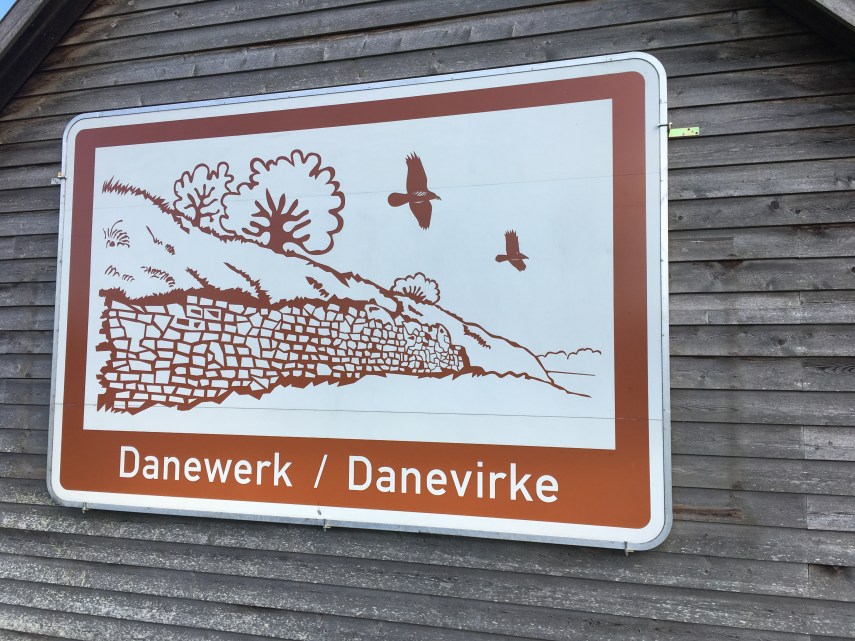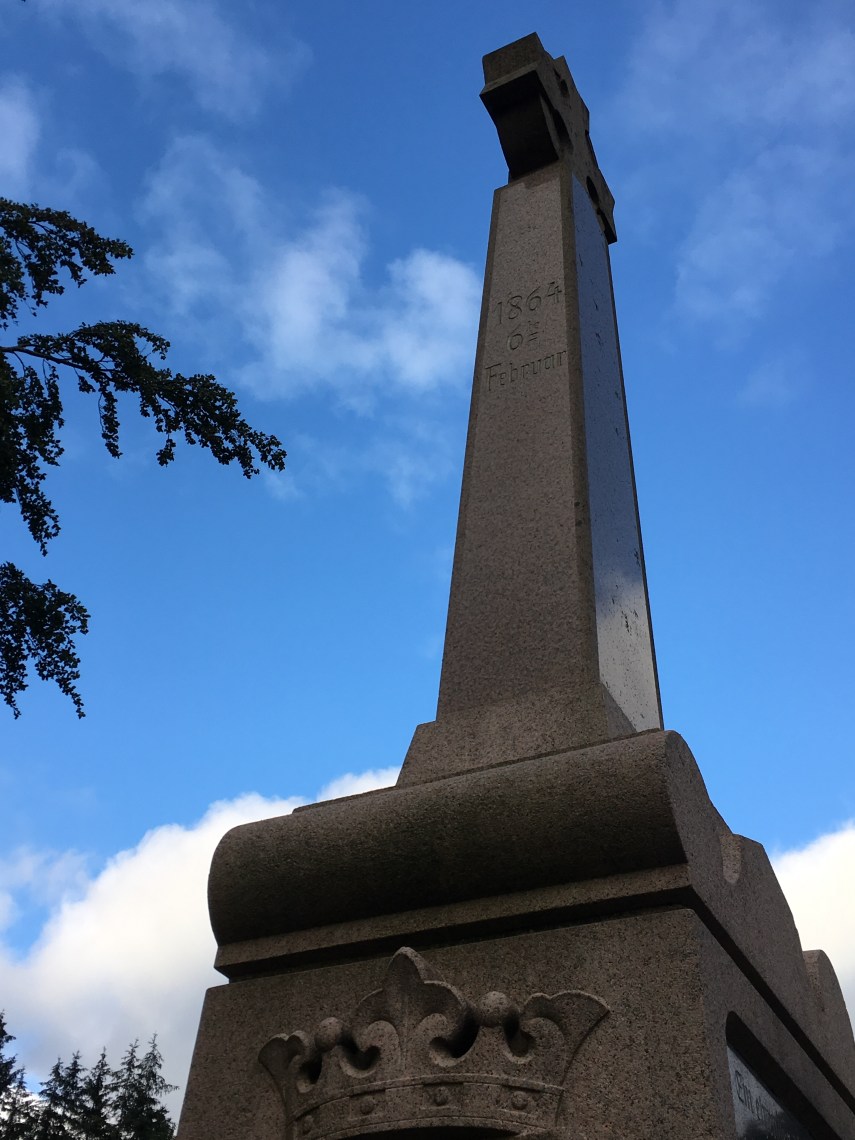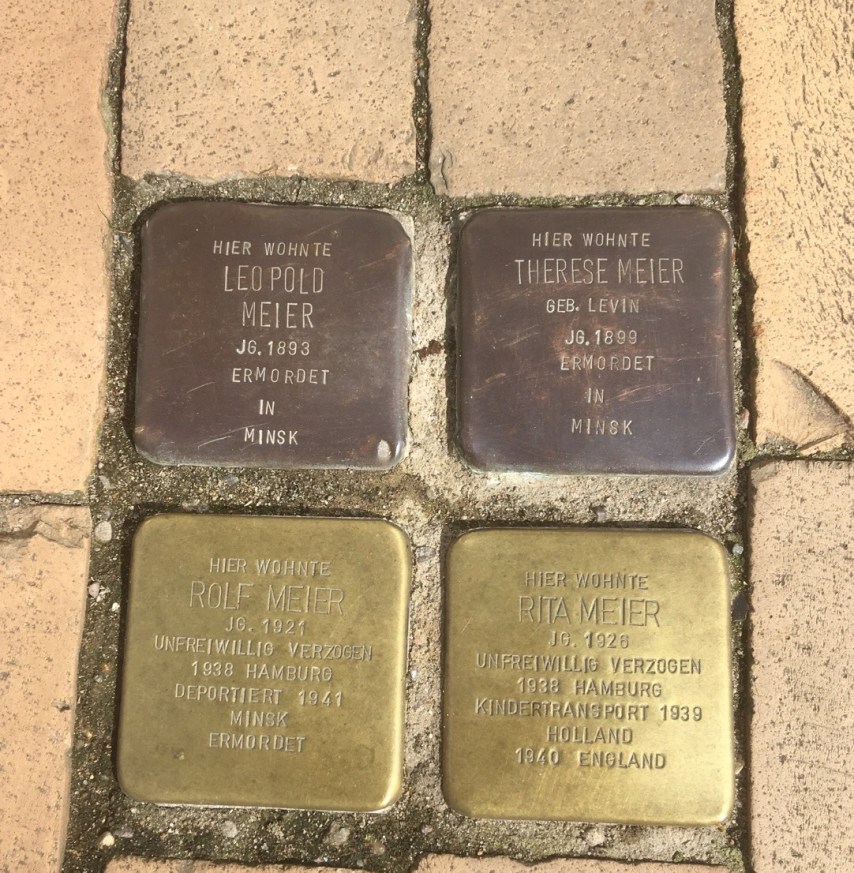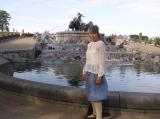Friedrichstadt Germany
Danevirke, the old Wiking border between Germany and Denmark
There is a text underneath each picture
In 1864, we lost a war to Germany, and the loss of soldiers and land was intolerable. A part of Jutland where Henry and I live was lost. Not long ago, my husband discovered through genealogy studies that his great grandfather took part in that war and miraculously survived as he was caught among many other soldiers as they retreated a cold February night in 1864 from the old Danish border called Danevirke in the now Northern Germany.

Historical plaquette at Danevirke
More on Danevirke, please click on the link

War memorial at Sankelmark near Danevirke for a war between Germany and Denmark 1864. The other side commemorates the fallen Austrian soldiers from the same battle.

War memorial at Sankelmark near Danevirke for a war between Germany and Denmark 1864. The other side commemorates the fallen Austrian soldiers from the same battle. In Denmark, our war memorials are less bombastic
The soldiers who were not caught after a nightly march were taken to a prisoner’s camp in South Germany where they were treated well. Those who were not caught continued to the next battle at Dybbøl which later was called “Slaughter Bench, Dybbøl”. Next year, July 2020, Denmark will celebrate the centenary of regaining some of the lost lands.
The Danish population south of the Danish border cherished the Danish flag Dannebrog in secrecy. They would lay out the flags on their hedges as they were not allowed to hoist their flag.

Dannebrog, the Danish flag from 1100-1200, the world’s oldest flag
This last Saturday, we combined my interest in old prams and Henry’s to see his great grandfather’s battleground and took a two hours trip south of our Danish border.
Friedrichstadt on the river Eider was established by Duke Friedrich the third in 1621. He persuaded Dutch settlers to develop the area in turn of freedom of religion.
Pictures from this past Saturday. The pram was too big and too expensive so we shared a piece of cake instead.
In the old town, Stolpersteine laid by Gunter Demnig since 1992. It’s the world largest memorial as he is creating a copper stone on every last chosen address of Nazi victims in Germany and all the countries occupied by the Nazis. Last months we got Stolpersteine in Copenhagen too.

Rieckchen Heymann b. 1873 murdered in Treblinka, Adolf Heymann, b. 1873 killed in Treblinka, Edith Rosenberger nee Heymann b. 1903, escaped to the U.S.A. 1935, Rudolf Heymann drowned 1933

Israel and Rosa Behrend lived here. Were murdered in Treblinka

Rita Meier b.1928, the only survivor in a family. She arrived in England via the Kindertransport. First stop Hamburg 1938, next Holland 1939 and finally England 1940. The parents and older brother killed in Minsk 1941

four of the Stolpersteine in the street in Friedrichstadt where these people lived
Dark parts of history are hiding in a beautiful town or nature, and most people ignorantly pass by.
Categories: History, Holocaust, Memorials, Travelling














Beautiful to honor all those people, Maria. The Danish are always coming up with unique ways to show their gratitude.
LikeLiked by 2 people
Thank you so much for what you just said GP Cox
LikeLiked by 1 person
You, Henry and your countrymen deserve praise!
LikeLiked by 1 person
Henry is preparing new posts on fallen heroes but it takes time to make them.
LikeLiked by 1 person
I well understand that. Tell him to take his time, we’ll be here!
LikeLiked by 1 person
“…Dark parts of history are hiding in a beautiful town or nature, and most people ignorantly pass by.” – This was very moving! Glad you are there to share it with us so we can remember.
LikeLiked by 2 people
Thank you so much for your kind response to my post MB Henry
LikeLiked by 1 person
Very interesting post!
LikeLiked by 2 people
Thank you for the following and comment
LikeLiked by 1 person